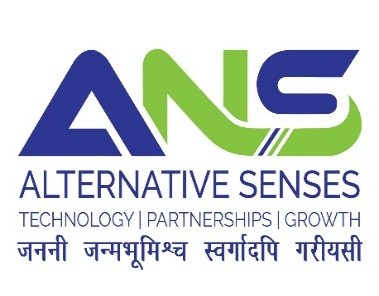Introduction
The semiconductor chip, which is an essential element in today’s electronic equipment, has been at the centre of worldwide politics in the past few years. The cruciality of chip technology was underscored during the COVID-19 pandemic where disruption in semiconductor supply chain affected various industries from electronics to automotive.[1] October 2020 saw the emergence of the term ‘chip war’, when the then President of United States Donald Trump proposed the National Strategy for Critical and Emerging Technologies so as to slow down China’s progress in semiconductor manufacture targeting specifically its capability of producing chips beyond 9 nm size.[2] For instance anything below 65 nanometer (nm) manufacturing is considered state-of-the-art technology when it comes to semiconductor chips. Smaller size of the chip makes the computing power more effective hence technological excellence in making small sized chip can be considered geopolitical tool considering its wide applications in critical technologies. US had planned on advancing its own position militarily and economically against the Chinese ambitions.[3] United states development plan was designed for perpetuation of its technological dominance in the world and stop china from getting ahead in this particular field. This necessity has forced that besides being innovative in the semiconductor technology, the strategic and economic implications can’t be ignored. India, aspiring to be important player in the electronic domain doesn’t have liberty of staying aloof and there is need to understand strategic imperative of the great game of the chip war.
Significance of the Chip War for India
The semiconductor chip, often called the heart of electronic ecosystem and future technology, is crucial for the growth of many future technologies such as 5G, Artificial Intelligence (AI), Internet of Things (IoT), and the 5th Industrial Revolution.[4] There is a global realisation of the statement “data is the new oil” implying that geopolitical as well as economic control of the world will be determined by the capability to acquire, store and process data. For example, the AI chips are known to provide unique semiconductor architectures that allow fast data processing between memory and processors. Furthermore, modern car industries need to develop more advanced processors for analog integrated circuits (ICs), memory ICs and advanced sensors for self-driving cars, higher safety standards for vehicles or electric cars among others.[5] India’s achievements in indigenisation of defence are widely cherished but the electronic components of missile technology and other advanced defence technologies like logical circuits, integrated circuits, sensors are based on imported semiconductors chips.[6] In the past especially during cold war period, India has experienced denial of critical technology, in case of nuclear technology and cryogenic engines.[7] Hence, critical technology is always associated with geopolitical great game. The new chip technology could also go one step ahead because of its dual use, and by selective access and denial strategy it can enhance ability of the adversaries. During the Cold War period when the U.S. interests were not favourable to India’s interests, it provided F-16 jets to Pakistan, denoting use of technology can be leveraged for geopolitical gains. In contemporary times, example of China’s ambitious “Made in China 2025” strategy can be taken into consideration which further complicates matters, posing a significant threat to India’s strategic and commercial interests by massive potential of controlling critical technology and raw materials supply.[8]
The existing semiconductor supply chain shows a lot of fragile centralisation, as the production and testing companies are almost entirely situated in East Asia. The experience of pandemics makes it fragile from the perspective of supply chain while the cruciality of the product makes its distribution essential and in this case this centralisation is extremely absurd. The fact is countries are so heavily rely on semiconductor chips supply for various industries that any disaster happening within East Asia be it health insecurity, political instability or even social unrest will pose serious threats to different industries around the globe. When there are interruptions in manufacturing or shipping activities in that region, it will affect many downstream firms causing overall disturbance within their supply chains.[9] The presence of geographical chokepoints which control the flow of trade, serves as another factor in making semiconductor supply chain fragile. These points of congestion like the Strait of Malacca in Indian Ocean are weak links in distribution networks for crucial components where they can easily be interrupted.[10]
There is apprehension that if there is an extensive trade war due to the chip war, India may have implications on trade security. After the U.S. CHIPS Act[11] and Executive Order on Safe, Secure, and Trustworthy Artificial Intelligence[12] that aimed at curbing China’s technological aspirations by denying high end technology, Chinese initiated retaliation by ban on export of germanium and gallium and stopped sales of these materials outside their borders which are necessary for producing semiconductors.[13] Further, China has heavily subsidised its domestic IT industry,[14] resulting in higher duties, scarcer supplies, and denied access to critical minerals, creating uncertainties beyond chip manufacturing. TSMC (Taiwan Semiconductor Manufacturing Company) specialised in production of 90% advanced chips[15] is susceptible to geopolitical upheaval in the upcoming future as Chinese President Xi Jinping’s ambition made clear to complete reunification with Taiwan by 2049.[16] The possible unification of Taiwan has started to make cracks on current architecture of the Chip manufacturing and TSMC has already begun to develop its plant in Arizona.[17]
This dawn of restructuring can serve as a boon for India if it capitalise on the opportunities created. The country has already established its presence in software development and engineering skills and it can be leveraged towards building an indigenous semiconductor industry. According to Stanford Professor Arogyaswami Paulraj, there are approximately 20% global workforce for chip designing who are Indians.[18] Instead of merely being seen as numbers or statistics though, there is need to take into account the fact that if properly harnessed this skill force could become valuable assets supporting India’s nascent semiconductor manufacturing sector.
Barriers and Advances in Indian Chip Manufacturing
India began its semiconductor journey in 1950 when Bharat Electronics Limited (BEL) was founded in 1954 and Semiconductor Complex Limited (SCL) in 1976 as two public sector undertakings in the field.[19] SCL started functioning at Chandigarh with the 5 µm CMOS technology based chip manufacturing plant in 1984, primarily serving the demands of the Department of Space.[20] With support of skilled manpower by the government from the premier Indian engineering colleges, the enterprise achieved success in manufacturing the 800 nm CMOS technology supported by technology transfers from various organisations like Microsystems Incorporation in the US, Rockwell and Hitachi. SCL’s approach of only developing application specific products for space and defence sectors while ignoring commercial markets cost it dearly in terms of global competitiveness and finally it was taken over by the Department of Space.[21] In a recent development, there have been talks about privatising this SCL in an attempt to revive this enterprise in free market world.[22] BEL, another government sector company, started production of germanium transistor in 1959 and was boosted by a technology transfer from Phillips in 1962. Although BEL was competitive in initial years, it eventually lost ground to more international rivals because lack of capital influx in research and manufacturing technology.[23]
The capital required for the setting up of semiconductor manufacturing plant and its operation has always remained an issue. For instance, while the much celebrated India’s Department of Space operates on about a billion dollars per annum, modern semiconductor fabrication plants (fabs) such as TSMC’s new Arizona plant cost about $12 billion.[24] When Taiwan saw an influx of funds into its own semiconductor industry during the late 1980s, it came up with a ‘Contract Manufacturing’ model centred around capital by which companies outsourced production while they themselves focused on research and design thus fostering thousands of ‘fabless’ firms (which did not own production facilities) worldwide at low costs.[25] During that period, India did not adopt this inventive model because its economy was mostly in a protectionist mode.
The self sufficiency in a semiconductor manufacturing sector is a distraction as manufacturing is only one part of semiconductor ecosystem.[26] Worldwide semiconductor supply chain’s complexity or interdependence has been demonstrated by the fact that even Intel, which traditionally made most of the chips it designed, now depends on 450 factories from 16000 suppliers across the globe. Hence semiconductor ecosystem is an amalgamation of technology, experts, labour, raw material, Research and design and even trade policies and economic prioritirs. This implies trade policies should focus on imports and exports too. Hence creating chip manufacturing ecosystem is complex affair encompassing things from capital infusion to trade policies.
Recent Efforts by India
India has been smartly behaving in excelling semiconductor ecosystem with strategic alliances and initiatives to maintain a robust semiconductor manufacturing sector.[27] India is now focusing on attracting foreign investment through a comprehensive US$10 billion Modified Programme for Semiconductors and Display Fab Ecosystem providing support up to 50% of project costs.[28] The programme aims to provide attractive incentive support to companies / consortia that are engaged in Silicon Semiconductor Fabs, Display Fabs, Compound Semiconductors / Silicon Photonics / Sensors (including MEMS) Fabs / Discrete Semiconductor Fabs, Semiconductor Packaging (ATMP / OSAT) and Semiconductor Design. One of the crucial step on the program is launch of India’s semiconductor mission scheme under the program.[29] The semiconductor mission is comprehensive efforts of Indian government to cover financial and administrative dimensions in order to flourish semiconductor manufacturing, design and packaging.[30] The four schemes launched under India’s semiconductor mission are
Sr No | Name of scheme | Objectives |
1 | Modified Scheme for setting up of Semiconductor Fabs in India | To attract investment in setting up semiconductor wafer fabrication |
2 | Modified Scheme for setting up of Display Fabs in India | To attract investments for manufacturing TFT LCD or AMOLED based display panels |
3 | Modified Scheme for setting up of Compound Semiconductors / Silicon Photonics / Sensors Fab / Discrete Semiconductors Fab and Semiconductor Assembly, Testing, Marking and Packaging (ATMP) / OSAT facilities in India | To extends a fiscal support of 50% of the Capital Expenditure on Pari-passu basis for certain facilities. |
4 | Semicon India Future Design: Design Linked Incentive (DLI) Scheme | It offers financial incentives and infrastructure support to development of integrated circuits, Chipsets etc. |
Table 1: Components of India’s semiconductor mission[31]
While tracing the trickle down effect of Government’s effort on ground, it can be seen that in September 2023, a significant step was taken when Foxconn, the Taiwanese firm known for assembling Apple’s iPhones, partnered with Indian mining conglomerate Vedanta to set to build a US$19.5 billion chip-making facility in Dholera, Gujarat. Vedanta’s chairman, Anil Agarwal, declared ambitious plans to manufacture 40,000 wafers per month within upcoming two and a half years.[32] ISMC Digital, a consortium of investors, has proposed a US$3 billion fabrication plant in Karnataka which will have Tower Semiconductor, an Israeli company, as its technology partner, highlighting the international collaborations India is leveraging to build its semiconductor infrastructure.[33]
The Tata Group has also declared its intention to enter the semiconductor manufacturing arena. Tata Sons Chairperson Natarajan Chandrasekaran has revealed plans to establish a semiconductor assembly and testing business with likeminded partners.[34] A critical element of these efforts is the India-US initiative on Critical and Emerging Technologies (iCET), which will be crucial in developing India’s chip ecosystem considering the scope for technology transfer.[35] This initiative inculcate collaborative efforts, facilitating technology transfer, and enhancing India’s semiconductor manufacturing capabilities, thereby aiming to position India as a future hub for semiconductor innovation and production.
Way Forward
India’s path to establishing a competitive semiconductor industry should be strategically segmented into three crucial stages chip design, chip manufacturing, and assembly, testing, and packaging with comprehensive coverage of other issues as well.
1. Chip Design:
India already has a strong foothold in chip design because of its abundant human capital and skilled workforce.[38] To invest in cutting-edge technologies, India should develop advanced training programs that build up its talent pool as well as foster partnerships between academic institutions and industry leaders. This will also be the only way through which encouraging research and development (R&D) into Artificial Intelligence (AI), Quantum Computing etc., could improve our ability for creating complex chip designs in the country.
2. Chip Manufacturing:
This stage is highly capital-intensive and dominated by a few global foundries. To attract investments, India must continue and expand its incentive programs, offering substantial financial support and a favourable regulatory environment for these foundries. Collaborations with leading international semiconductor companies, like the partnerships with Foxconn, Vedanta, and ISMC Digital, are crucial which can bring not only financial investment but also technological expertise. The scope for establishing public-private partnerships can help share the financial burden and risks associated with setting up and maintaining advanced fabs.
3. Assembly, Testing, and Packaging (ATP):
The ATP stage is hand cutting and it accords with India’s advantage in abundant labor forces and low labor costs. Establishing industrial parks specialising in semiconductor ATP will appeal to multinational enterprises seeking to subcontract such activities.[37] India can develop a complete supply chain by creating an ecosystem that involves raw material suppliers, equipment providers and service companies among others.
4. Policy and Regulatory Framework
For the semiconductor industry to grow sustainably and prosper, there must be supportive policies and regulations. These rules should be restructured in such a way that they make it easy for companies dealing with semiconductors to enter into business as well operate in the market. Intellectual property rights have to be protected through robust policy while fair competition is promoted through legislation that regulates monopolistic tendencies among other market players. It could be seen that fund of only 13 crores was disbursed by Government under the semiconductor mission in till December 2022.[38] Considering the criticality of financial assistance at different stages of the growth cycle of semiconductor ecosystem, dedicated funds for innovation needs be set up.
5. International Trade and Geopolitical Strategy
Given the geopolitical implications of the semiconductor industry, India has to adopt a proactive international trade and geopolitical strategy. Negotiating favourable trade agreements is necessary to ensure access to critical raw materials and advanced technologies. Strengthening geopolitical alliances with key semiconductor-producing nations like the US, Japan, and South Korea can mitigate risks associated with supply chain disruptions. The idea of Quad cooperation has already been pitched by experts.[39] Diversifying import sources for essential semiconductor components will reduce dependency on any single country which will lead to enhance supply chain resilience.
6. Focus on Sustainability
Sustainability needs to be at the core of India’s semiconductor strategy considering long term gains. Promoting green manufacturing practices in semiconductor fabs can minimise environmental impact, with focus on the use of renewable energy and efficient waste management systems. Ensuring that the supply chain sticks to environmental and social governance (ESG) standards will not only support sustainability goals but also attract leading global investors and partners who prioritise ESG compliance.
Conclusion
India is at a critical juncture in its semiconductor journey where it could change from being just a consumer to becoming one of the biggest producers in the global industry for chips. To overcome past setbacks in this field and taking advantage of human resource as well software development capabilities, there should be continuous improvement on international cooperation and strategic investment attraction by the country based on such strengths. Some progress has been made already through partnerships between private enterprises with Government supported programs like iCET besides there is need to extend them even further into Quad nations. India may become more than self-reliant if it takes some courses of action. These moves include enhancing chip design capabilities and setting up state-of-the art manufacturing plants. By also excelling in assembly, testing and packaging, the nation will create robust semiconductor ecosystems that are internationally competitive. With such an approach being anchored on government policies as well as global partnerships, the future looks bright for India’s participation in world markets where economic security is tied to technological advancement.
DISCLAIMER
The paper is author’s individual scholastic articulation and does not necessarily reflect the views of CENJOWS. The author certifies that the article is original in content, unpublished and it has not been submitted for publication/ web upload elsewhere and that the facts and figures quoted are duly referenced, as needed and are believed to be correct.
ENDNOTES
- Pranav Mukul and Anil Sasi, “Explained: How and why Covid-19 disrupted production of automobiles”, The Indian Express, 31 March 2021 https://indianexpress.com/article/explained/automobile-manufacturing-coronavirus-impact-car-chips-shortage-7251945/
Konark Bhandari, “The Geopolitics of the Semiconductor Industry and India’s Place in It”, The Carnegie Endowment, 30 June 2023,
https://carnegieendowment.org/research/2023/06/the-geopolitics-of-the-semiconductor-industry-and-indias-place-in-it?lang=enJordan Bish et al, “A new dawn for European chips”, Deloitte Insights, 3 November 2022,
https://www2.deloitte.com/xe/en/insights/industry/technology/semiconductor-chip-shortage-supply-chain.html“Semiconductors and the U.S.-China Innovation Race”, A SPECIAL REPORT BY FP ANALYTICS, The Foreign Policy, 16 February 2021,
https://foreignpolicy.com/2021/02/16/semiconductors-us-china-taiwan-technology-innovation-competition/T Murrali, “What Role Do Memory Chips Play In The World Of Automotive Innovation”, Mobility Outlook, 22 March 2024,
https://www.mobilityoutlook.com/features/what-role-do-memory-chips-play-in-the-world-of-automotive-innovation/Akshat Upadhyay, “Role of Semiconductors in India’s National Security”, Occasional Paper No. 61, MP- IDSA, October 2022
https://www.idsa.in/occasionalpapers/op-61-Role-of-Semiconductors-in-IndiaSheela Bhatt, “US-China ‘cold war’ over chips has a lesson — India needs more Dholera”, The Print, 31 October 2022
https://theprint.in/opinion/us-china-cold-war-over-chips-has-a-lesson-india-needs-more-dholeras/1188032/James McBride and Andrew Chatzky, “Is ‘Made in China 2025’ a Threat to Global Trade?”, Council on Foreign Relations, 13 May 2019,
https://www.cfr.org/backgrounder/made-china-2025-threat-global-tradeAlan Crawford et al, “The World Is Dangerously Dependent on Taiwan for Semiconductors”,The Bloomberg, 26 January 2021
https://www.bloomberg.com/news/features/2021-01-25/the-world-is-dangerously-dependent-on-taiwan-for-semiconductors“Penang the surprise winner of US-China chip war – FT report”, Business Times, 14 March 2021,
https://www.nst.com.my/business/economy/2024/03/1025531/penang-surprise-winner-us-china-chip-war-ft-reportMichelle Kurilla, “What Is the CHIPS Act?”, The Council on Foreign Relations, 29 April 2024,
https://www.cfr.org/in-brief/what-chips-act#:~:text=Defining%20the%20CHIPS%20Act&text=Signed%20into%20law%20in%20August,individual%20companies%20offshoring%20the%20technology.“Overview of ‘The Executive Order on the Safe, Secure, and Trustworthy Development and Use of Artificial Intelligence’”, pwc, 23 January 2024,
https://www.pwc.com/jp/en/knowledge/column/generative-ai-regulation09.htmlZeyi Yang, “China just fought back in the semiconductor exports war. Here’s what you need to know”, MIT Technology Review, 10 July 2023
https://www.technologyreview.com/2023/07/10/1076025/china-export-control-semiconductor-material/Wan-Hsin Liu et al, “Foul Play? On the Scale and Scope of Industrial Subsidies in China”, Washington International Trade Association, 4 January 2024
https://www.wita.org/atp-research/china-foul-play/“Taiwan’s dominance of the chip industry makes it more important”, Special Report, The Economists, 6 May 2023
https://www.economist.com/special-report/2023/03/06/taiwans-dominance-of-the-chip-industry-makes-it-more-importantCarlos Garcia and Yew Lun Tian, “China’s Xi vows ‘reunification’ with Taiwan”, Reuters, 10 October 2021
https://www.reuters.com/world/china/chinas-xi-says-reunification-with-taiwan-must-will-be-realised-2021-10-09/Jessica Boehm, “TSMC will build one of world’s most advanced chips plants in Phoenix”, Axios Phoenix, 8 April 2024
https://www.axios.com/local/phoenix/2024/04/08/tsmc-semiconductor-chips-plant-phoenixSheela Bhatt, “US-China ‘cold war’ over chips has a lesson — India needs more Dholera”, The Print, 31 October 2022
https://theprint.in/opinion/us-china-cold-war-over-chips-has-a-lesson-india-needs-more-dholeras/1188032/History, Bharat Electronic Limited
https://bel-india.in/history/Jatin Grover, “India’s first semiconductor fabrication unit chips in”, The Financial Express, 22 April 2024
https://www.financialexpress.com/business/industry-indias-first-semiconductor-fabrication-unit-chips-in-3464066/Choodie Shivram, “India’s semiconductor moment”, The Statesman, 17 February 2024
https://www.thestatesman.com/opinion/indias-semiconductor-moment-1503046515.html“SCL Commercialisation Under India Semiconductor Mission: MeitY Invites Proposal For Asset Valuation Of Fab Facilities”, Swarajya, 27 January 2022,
https://swarajyamag.com/news-brief/scl-commercialisation-under-india-semiconductor-mission-meity-invites-proposal-for-asset-valuation-of-fab-facilitiesJORDAN SCHNEIDER AND LILY OTTINGER, “India’s Chip War”, The ChinaTalk, 27 February 2024
https://www.chinatalk.media/p/indias-chip-warSherisse Pham, “Taiwan chip maker TSMC’s $12 billion Arizona factory could give the US an edge in manufacturing”, CNN Business, 15 May 2020
https://edition.cnn.com/2020/05/15/tech/tsmc-arizona-chip-factory-intl-hnk/index.htmlNilesh Christopher, “What the U.S.-China chip war means for India”, Rest of the World, 1 May 2023
https://restofworld.org/2023/us-china-chip-war-india/Pranay Kotasthane, “Siliconpolitik: The Case for a Quad Semiconductor Partnership”, ISAS Working Papers, National University of Singapore, 26 April 2021
https://www.isas.nus.edu.sg/papers/siliconpolitik-the-case-for-a-quad-semiconductor-partnership/Muntazir Abbas, “Government to boost funds for India Semiconductor Mission, says MeitY Secretary”, The Economic Times, 8 May 2024
https://economictimes.indiatimes.com/industry/cons-products/electronics/government-to-boost-funds-for-india-semiconductor-mission-says-meity-secretary/articleshow/108334041.cms?from=mdr“Does India have what it takes to be a semiconductor superpower?”, TechHQ, 30 October 2023,
https://techhq.com/2023/10/can-india-become-a-semiconductor-superpower/“Modified Programme for Semiconductors and Display Fab Ecosystem”, MEITY, Government of India
https://www.meity.gov.in/esdm/Semiconductors-and-Display-Fab-Ecosystem“India Semiconductor Mission”, PIB, 21 December 2022
https://pib.gov.in/PressReleasePage.aspx?PRID=1885367“India Semiconductor Mission”, PIB, 21 December 2022
https://pib.gov.in/PressReleasePage.aspx?PRID=1885367Ashok Sharma, “Chip maker Foxconn exits a semiconductor joint venture with Indian mining company Vedanta”, APNews, 12 July 2023
https://apnews.com/article/foxconn-semiconductor-deal-vedanta-mining-a5c945fbbce2b407986e8216f1aaf8e6#:~:text=Hon%20Hai%20Technology%2C%20known%20internationally,This%20is%20not%20a%20negative.“ISMC to invest $3 billion in Karnataka to set up India’s first chip-making plant”, The Financial Express, 2 May 2022,
https://www.financialexpress.com/business/industry-ismc-to-invest-3-billion-in-karnataka-to-set-up-indias-first-chip-making-plant-2509657/“Tata Group to Build the Nation’s First Fab in Dholera”, Press Release, Tata Electronics, 29 February 2024
https://www.tata.com/newsroom/business/first-indian-fab-semiconductor-dholeraVivek Mishra, “iCET: Upscaling India-US partnership for a tech-centric future”, ORF Online, 9 February 2023
https://www.orfonline.org/expert-speak/icet-upscaling-india-us-partnership-for-a-tech-centric-futureSheila Chiang, “India is a key chip design market, Qualcomm says, as Modi makes semiconductor push”, CNBC, 23 April 2024
https://www.cnbc.com/2024/04/23/india-is-a-key-chip-design-market-says-qualcomm-as-modi-makes-chip-push.htmlPranay Kotasthane, “Siliconpolitik: The Case for a Quad Semiconductor Partnership”, ISAS Working Papers, National University of Singapore, 26 April 2021
https://www.isas.nus.edu.sg/papers/siliconpolitik-the-case-for-a-quad-semiconductor-partnership/“India Semiconductor Mission”, PIB, 21 December 2022
https://pib.gov.in/PressReleasePage.aspx?PRID=1885367Shrikrishna Upadhyaya, “Takshashila Issue Brief – The Quad Agenda for Semiconductors, Biotechnology, and Space”,Takshashila Institution
https://takshashila.org.in/research/issue-brief-quad-agenda-semiconductors-biotechnology-and-space














































